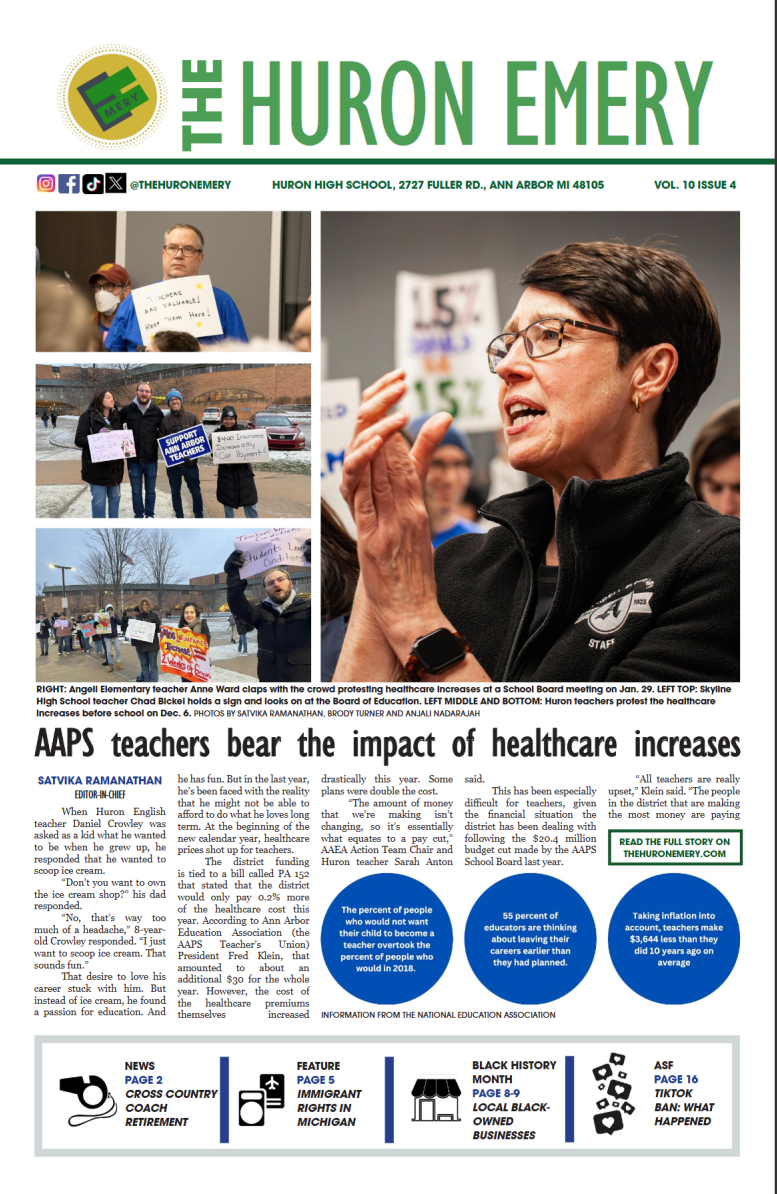Sex education in America: Looking at the history of sex education

December 22, 2022
Where it started
In the 19th century, sex education became a public issue as American soldiers and sailors acquired sexually transmitted infections (STIs). On July 9, 1918, the U.S. federal government passed the Chamberlain-Kahn Act to combat the spread of STIs. The Chamberlain-Kahn Act set the American Plan in motion during World War II when U.S. officials arrested tens of thousands of Americans — almost exclusively women — suspected of having STIs. The U.S. officials detained the women who tested positive in penal institutions and injected them with mercury or other arsenic-based drugs, the syphilis treatment at the time.
In 1964, Dr. Mary Calderone founded the Sexuality Information and Education Council of the United States to promote comprehensive sex education. In 1981, the AIDS epidemic started — 84.2 million people worldwide acquired the human immunodeficiency virus (HIV) — changing the course of sex education in America. “There is now no doubt that we need sex education in schools and that it must include information on heterosexual and homosexual relationships,” Surgeon General C. Everett Koop said in a 1984 TIME cover story. “We must be as explicit as necessary to get the message across. You can’t talk of the dangers of snake poisoning and not mention snakes.”
According to Planned Parenthood, “Beginning in the 1980s, a debate began in the United States between a more comprehensive approach to sex education, which provided information about sexual health — including contraception — and abstinence-only programs. Education about sex and sexuality in U.S. schools progressed in these two divergent directions. The former was based on the belief that medically accurate and comprehensive information about sexual health would decrease risk-taking behaviors among young people. The latter was based on the erroneous belief that medically accurate, comprehensive information would increase risk-taking behaviors among young people.”
Moving into the 2000s
In 2008, the McCain-Palin campaign released an ad titled “Education” critiquing Barack Obama for supporting “legislation to teach comprehensive sex education’ to kindergarteners” showing a long-standing debate over sex education. The ad referenced an Illinois state Senate bill that lowered the age limit for comprehensive sex education and mandated discussions for kindergarteners to be “age appropriate.”
“We want to make sure that [sex education is] medically accurate and age-appropriate,” Obama said in a 2004 U.S. Senate debate. “One of the things my wife and I talked to our six-year-old daughter about is the possibility of somebody touching them inappropriately and what that might mean. And that was included specifically in the law so that kindergarteners can exercise some possible protection against abuse.”
To support evidence-backed comprehensive sex education, the Obama administration redirected funds from the Community-based Abstinence Education Program to launch the Teen Pregnancy Prevention Program (TPPP) in 2010. The TPPP awarded 81 five-year federal grantees to teen pregnancy programs and research. In July 2017, the Trump administration recalled the grantees two years early and, in 2018, released a budget proposal to invest $277 million in abstinence-only programs. The Trump administration faced several lawsuits from Planned Parenthood chapters and eight other agencies over terminating the TPPP grants.
The Debate Goes On
“There is a kind of a cultural backlash these days against the idea that public schools are conveying more liberal attitudes,” History teacher Kathryn Jones said. “I went to high school in the early ‘80s when sex education was much more conservative, and what I was taught was not what my children were taught in the past 10 years.”
Between 1998 and 2016, the United States government invested over $2 billion in abstinence-only-until-marriage policies and programs (AOUM), despite research suggesting AOUM programs are ineffective. AOUM programs focus only on abstinence while withholding information about human sexuality, including STIs, reproductive health, and sexual assault. A study by the Society for Adolescent Health and Medicine shows that AOUM programs prevent sexually experienced adolescents from accessing “complete and accurate information about contraception, legal rights to health care, and ways to access reproductive health services.” Furthermore, the study describes how AOUM programs stigmatize and isolate LGBTQ+ youths.
“[The LGBTQ+ community] should not be demonized,” said an anonymous Huron sophomore who identifies as bisexual. “When I was little, I knew I was into women and men. I didn’t have a word for it, so I felt ashamed.”
Abstinence is the best way to prevent pregnancy and the transmission of STIs and STDs. According to West Virginia Health and Human Resources, “Sexual abstinence is a choice to refrain from sexual activity. The reason may be moral, religious, legal, or for health and safety. Sexual abstinence is the only 100% effective way to avoid the sexual transmission of HIV.” Furthermore, abstinence allows some people to connect with their faith.
Sex Education in Ann Arbor
Under Michigan law, Michigan schools must stress sexual abstinence as a “responsible and effective method for the restriction and prevention of [dangerous communicable diseases]” and a “positive lifestyle for unmarried young people.” In 2017, The Ann Arbor Public Schools established the Sexual Health Education Advisory Committee (SHEAC) to propose and discuss health curriculum changes to the AAPS Board of Education. SHEAC organizes the content into seven strands, one of which is sexuality education, to meet Michigan’s Merit Curriculum credit requirements.
At Huron High School, student-led organizations like the Sexual Assault and Awareness Club (SAAC) combat the stigma of sexual assault. Nolan and Nordin changed the club name from Sexual Assault and Prevention to Sexual Assault and Awareness to stress how sexual assault victims are not at fault.
“If you don’t know what else is out there, you won’t know what to do when you get into scary or unsafe situations, so you should at least understand what you could do for safe sex and protection,” Nordin said. “Abstinence is not a bad thing. Your choice is valid, but abstinence shouldn’t be the only thing you learn because — in reality — most people are sexually active.”
According to the 2019 Youth Risk Behavior Survey, 38.4 percent of high schoolers nationwide had sexual intercourse, and 45.9 percent of sexually active youths did not use a condom. The CDC recommends external condoms for men made from latex, plastic, or synthetic rubber and internal condoms for women, which are inserted into the vagina to protect against HIV. If worn correctly, external condoms have a 98 percent chance of effectiveness, and internal condoms have a 95 percent chance. Factors like peer pressure affect teen condom decisions. A study from The European Journal of Contraception & Reproductive Health Care interviewed 24 women ages 16-20 who received or had an appointment for a surgical abortion. According to the study, “The most common reasons for non-use of contraception related to forgetting or ‘not thinking’, being ‘it the moment’ (i.e., being ‘in the mood’, not wishing to ‘break a spell’), the influence of alcohol, and pressure from young men not to use condoms. Lack of knowledge was rarely cited as a reason.”
Ending the Health Stigma
Healthcare programs seek to end the stigma towards STIs. Although knowledge of STIs has improved since the start of the AIDS Epidemic, one misconception is that people living with HIV must reframe from sexual activity. Michigan Medicine stands behind the Undetectable = Untransmittable (U=U) message. Backed by HIV experts and researchers, the U=U message affirms that people living with HIV and are on antiretroviral therapy cannot transmit HIV to their sexual partners.
As of Oct. 24, 2022, Michigan is one of the 38 U.S. states with laws criminalizing HIV exposure. Under the Michigan HIV and STD Criminal Law, people living with HIV who fail to disclose their HIV status before sexual penetration could face a felony for up to four years. On Dec. 28, 2019, Republican and former Michigan governor Rick Synder signed House Bills 6020 and 6021 into law, softening the Michigan HIV and STD Criminal Law. According to HIV Justice Network, “The amended law removes those living with HIV who are on treatment and virally suppressed-posing no risk of transmitting HIV-from being subject to prosecution. It also narrows the scope of sexual activities subject to prosecution, from “any type of sexual penetration to only “vaginal and anal sex.” Oral sex, which poses no or negligible risk of transmission regardless of whether the person with HIV is on treatment or virally suppressed, is no longer subject to prosecution.” The amended law shows that state governments are taking action against misconceptions about HIV.
However, the amended law fails to address disparities in accessing healthcare. According to the Center for HIV Law and Policy, “[People living with HIV] who are not able to prove they have been in regular medical care and have had an undetectable viral load for an extended period can be prosecuted even if they had no intent to do harm and in fact did not transmit HIV to a partner.”
Charletta Mims is a clinical social worker at Michigan Medicine. She runs the Consumer Advisory Council (CAC), where patients living with HIV offer suggestions to improve their healthcare experience, from finding parking space to accessing appointments during Covid-19. Her patients have felt empowered by the U=U message, but still, feel like they have a moral obligation to disclose their HIV status even though Michigan law no longer mandates their disclosure during appointments.
“At the end of the day, think of people as people and not as an illness,” Mims said. “When you get the flu or a common cold, you don’t go out searching for the cold. It happened to you.”
Resources on sexual health are available through asking counselors and health teachers.










